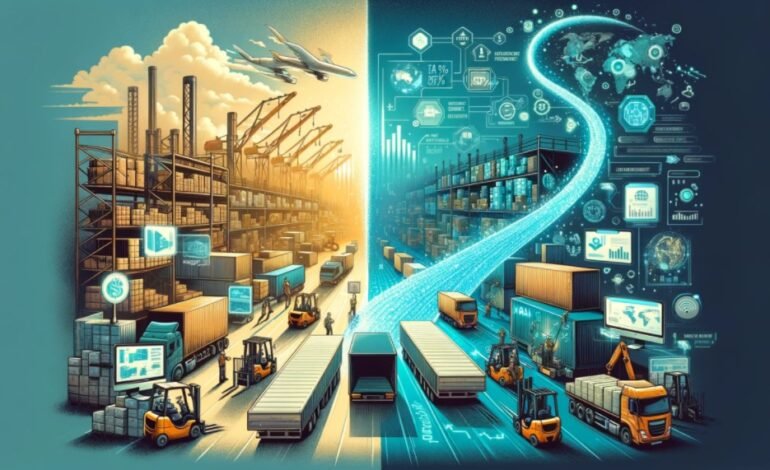How Modern Technology is Transforming Supply Chain Efficiency

Key Takeaways:
- Modern tech innovations are critical for reinforcing delivery chain performance.
- Automation and AI are pivotal components in reducing operation fees and mistakes.
- Real-time monitoring technology helps improve stock and logistics control.
- Data security in supply chains is non-negotiable with the accelerated era of adoption.
Introduction to Supply Chain Technology
In the cutting-edge rapidly evolving environment, the supply chain industry is experiencing an enormous transformation pushed by the emergence of the superior era. Modern tech equipment and systems promise to streamline operations, reduce charges, and enhance productiveness across various degrees of supply chain control. One of the largest improvements in this place has been the development of eld devices, which are important in ensuring compliance and performance in logistics operations.
Incorporating new technologies such as electronic devices into supply chain management can offer many advantages beyond easy regulatory compliance. These devices contribute considerably to actual-time tracking and automation, capabilities that are integral to trendy delivery chains.
The Role of Automation and AI
Automation and artificial intelligence (AI) are key drivers in revolutionizing delivery chains. Companies can hugely reduce human mistakes and operational inefficiencies by automating repetitive duties and the use of AI to forecast demand and optimize routes. According to a document, groups adopting AI-driven logistics answers can see a discount in logistics charges by up to 20%. These advancements pave the way for greater dependable and efficient delivery chains, presenting unprecedented accuracy and speed.
Benefits of Automation
- Reduction in human errors, leading to fewer errors in operations.
- Increased operational velocity, permitting quicker processing and shipping of products.
- Lower hard work fees via reducing the need for guide hard work and interventions.
AI in Demand Forecasting
Accurately forecasting future demand has consistently posed an assignment in supply chain control. AI can study beyond facts and cutting-edge market patterns to create accurate predictions, facilitate stock planning and waste discounts, and ensure well-timed product availability. Forecasting future needs is crucial for companies to modify to marketplace changes unexpectedly, satisfy patron needs, and deal with stock efficiently.
Real-Time Tracking and Inventory Management
Real-time tracking technologies which include RFID tags and GPS monitoring allow companies to reveal the movement of goods with extraordinary accuracy. This no longer enables higher stock control however additionally enhances logistics efficiency. A study emphasizes the significance of real-time records in making knowledgeable choices that may improve common supply chain performance.
Advantages of Real-Time Tracking
- Improved inventory accuracy by way of presenting real-time insights into stock levels.
- Enhanced logistics and course optimization, ensuring timely and efficient delivery of goods.
- Better purchaser delight through dependable shipping instances and obvious tracking statistics.
RFID and GPS Usage
Combining RFID and GPS era permits corporations to as it should be track gadgets in transit, imparting real-time updates and reducing the hazard of loss or robbery. Innovations in the monitoring era help companies in making sure an obvious and responsible supply chain by means of quickly recording and supervising every movement and transaction.
Improving Data Security
Data safety has turned out to be a primary issue with the growth in digital strategies for handling supply chains. Implementing sturdy cybersecurity measures protects sensitive information approximately products and transactions from breaches. The National Institute of Standards and Technology (NIST) presents precise pointers to guard digital delivery chains, which organizations can use to secure their operations.
Essential Data Security Measures
- Adopting encryption for records switches to secure sensitive information from unauthorized access.
- Implementing multi-issue authentication to restrict entry to vital systems to the most effective authorized employees.
- Regularly updating protection protocols to combat evolving cybersecurity threats and vulnerabilities.
Challenges and Solutions
While the modern-day era offers numerous advantages, integrating these answers takes time and effort. Companies may also face excessive initial charges, resistance to trade, and the want for specialized talents. However, corporations can gradually conquer those obstacles by making an investment in training and adopting a phased implementation approach.
Overcoming Resistance to Change
One essential hurdle in technology adoption is resistance to change inside the company. This may be mitigated through continuous training programs and workshops that familiarize employees with new structures and tactics. Demonstrating generation integration’s lengthy-time period advantages and ROI also can assist advantage stakeholder buy-in and reducing resistance.
Future Trends in Supply Chain Technology
The future of the supply chain era looks promising, with improvements like blockchain and the Internet of Things (IoT) on the horizon. These technologies provide new ways to make certain transparency, traceability, and performance in delivery chain operations. For example, blockchain technology can create immutable information about transactions, making it less complicated to track goods and prevent fraud. These technologies will provide new avenues for enhancing supply chain robustness and reliability as they become more mainstream.
Blockchain Applications
- Enhanced traceability and tracking of goods, making sure of quit-to-end visibility.
- Reduction in fraudulent activity via secure, tamper-proof transaction facts.
- Improved transparency and responsibility, as every stakeholder can access a shared and unalterable ledger.
Conclusion
Adopting contemporary technology in supply chain control is more vital than ever. Businesses that understand and implement those advancements can live ahead of the curve, ensuring operational performance and client pleasure. Technology will absolutely stay critical in shaping the future of delivery chains, fostering an environment in which efficiency, transparency, and agility are the norm.













